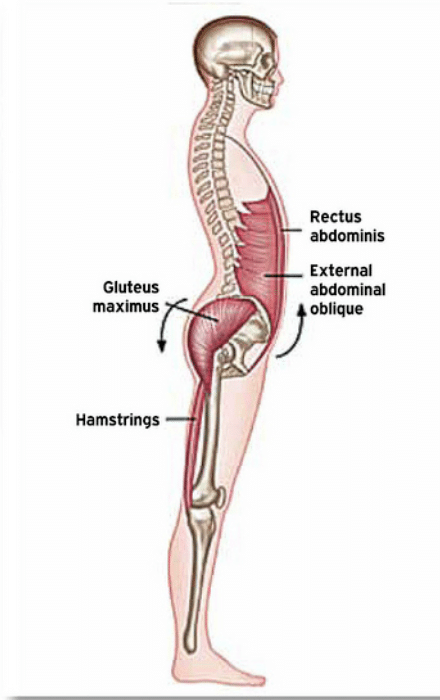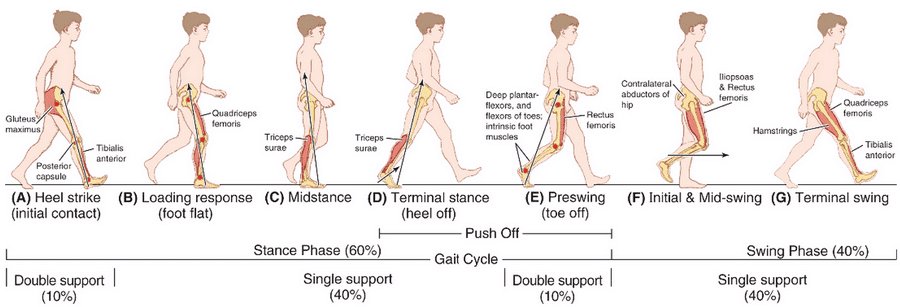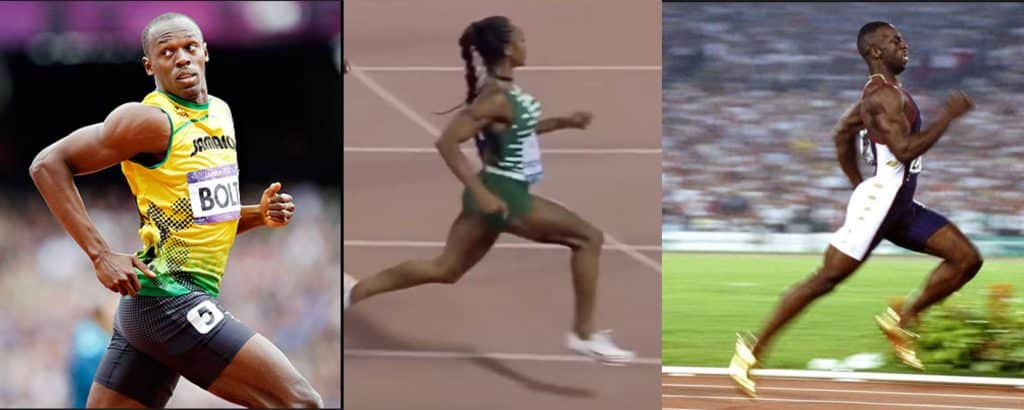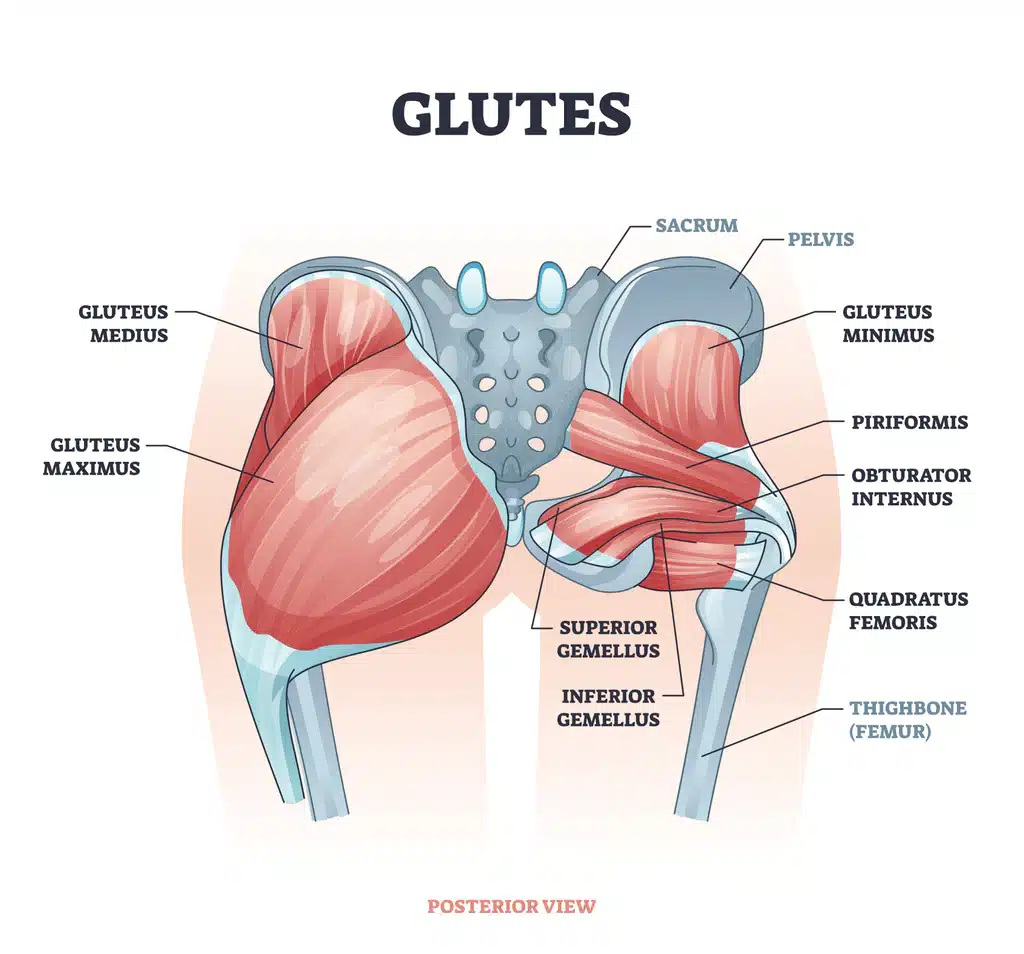How an Anterior Pelvic Tilt Makes You Faster
Apr 04, 2024
Most often, an anterior pelvic tilt when sprinting is looked at as a bad thing. However, the fastest, most powerful athletes have an anterior tilt of the pelvis. In this post, we will dive deeper into how it improves your sprint and makes you faster.
What Is An Anterior Pelvic Tilt?
An anterior pelvic tilt occurs when the front of your pelvis rotates forward, and the back of your pelvis rises. While a posterior pelvic tilt happens when the front of a pelvis raises up and the back drops, making the pelvis rotate forwards. Everyone’s pelvis rotates both anterior to posterior with some lateral pelvic tilt as well while walking, running, cutting, etc.

The point of this article is to make the argument that a slight anterior pelvic tilt can help you improve your speed. Most of the argument comes from the reality that many of the fastest people in the world have a more anterior pelvic tilt at neutral position. This does not mean their pelvis does not posteriorly tilt, but instead they potentially get more muscle activation out of posterior pelvic tilt which activates the glutes and properly positions the pelvis, especially when sprinting.

When you think about the anatomy of the body, when the pelvis is posteriorly tilted, your hamstrings and abdominal muscles tend to be a little shorter, while your hip flexors are lengthened. Also in a posterior pelvic tilt, your spine will be straighter, creating more of a neutral spine position. When you have an anterior pelvic tilt, your hamstrings and abdominal muscles are lengthened, but your hip flexors and lower back muscles will be shortened. Because the back of your pelvis rotates upwards in an anterior pelvic tilt, you will put more pressure on your lumbar spine also known as lumbar lordosis. This is when the pelvic tilts forward so much that there is an excessive amount of extension in the lower spine.

What’s interesting is it is very commonly discussed how the pelvis tilt forward decreases glute activation which would decrease athletic performance. But then how come some of the best and fastest athletes in the world have an anterior pelvic tilt?
Common Misconception Of An Anterior Pelvic Tilt

A common misconception when it comes to having an anterior pelvic tilt is that it causes you to have weak glutes and hamstrings. In reality, it gives athletes the opportunity to potential build more strength and power in their helps. Also, the stiffness in your back that is caused by an anteriorly tilted pelvis will help you generate more force because of the quick stretch-shortening cycle. The more you can lengthen the muscle, the more power will be produced when the muscle shortens.
Having anterior pelvic tilt benefits you in having a lot of overall power production. With your pelvis rolled forward, your weight will hold itself on the balls of your feet, rather than on your heels. As athletes, you want to be more on the balls of your feet because it will allow you to be more balanced and have more momentum moving forwards. As opposed to a posterior pelvic tile which puts more weight on your heels and makes athletes more hard on their feet.
Additionally, when you go to stretch or load your hamstrings you will be able to do it more efficiently and easily. If you bend over to touch your toes with a more anterior pelvic tilt angle, you will be able to get a deeper, more effective stretch within the hamstrings. If you maintain a posterior position of the pelvis and do the same stretch, you will be stretching more of your lower back, instead of the hamstrings.
Why Posterior Pelvic Tilt Makes You Less Explosive
When you have more of a posterior pelvic tilt your glutes and hamstrings end up being shorter, while your hip flexors end up being a little bit longer. Additionally, your abs end up being a little bit shorter and also you end up having more of a straight or neutral spine.
How Pelvic Position Impacts Your Lower Back
If you have more of an anterior tilt of the pelvis you end up having a little bit more length within your hamstrings, you have more length within like your core muscles, you’re going to be tighter in your hip flexors and then you’re also going to be tighter within the lower back muscles and you end up really putting a lot more pressure on your lumbar spine.
The big thing ends up going into is where is the right range to be in there is going to be a natural spine curve that you’re going to have, you know a pelvis it’s a little more neutral and a spine that’s a little bit more neutral and then when you start to get more of an anterior tilt of the pelvis there just ends up being a little bit more that you put onto like your lower back there a little bit more pressure that you could potentially put onto your lumbar spine and can end up having some pain in that area.
A posterior tilt of the pelvis can end up having a lot of pain within that lumbar spine but you do want to be able to manage it and just because you have a tilt of the the anterior tilt or posterior tilt of the pelvis doesn't mean that you're guaranteed to be having lumbar spine pain and doesn't mean that it ends up being something that is detrimental to your real ability to run at a high rate or be able to generate a lot of power and the reason I say that is because again going into a lot of these top athletes.
Examples Of Some Of The Best Athletes With Anterior Pelvic Tilt
Usain bolt and really the bigger thing here is after he got disqualified you could see how his stomach is bulging out and that's a common thing of somebody that has more of an anterior toes of the pelvis is that their stomach is going to bulge out more rather than somebody that's more posterior tilted where they're going to be kind of caved in with that stomach. Then there's Sha'Carri Richardson you can see how she's really tilted with the pelvis it's facing downwards there, then it's Simone Biles one of the best gymnasts in the world you can see again how she has that that tilt of the pelvis.
Next we have Michael Johnson here who is famous for running with that big extension in the lumbar spine just like and having to add more anterior tilt of the pelvis and then we also have Tyreek Hill as well so a lot of the the fastest and powerful athletes all seem to have more of an anterior tilt of the pelvis and how are they able to do that and still be able to play at such a high level and also not experience pain and why does that end up being beneficial and then also i do want to point out that you just don't see very many athletes that have more of a posterior tilt of the pelvis and that's something people talk about as super important to be able to activate the glutes.
you need to be able to have and it is true you know when you’re going and getting um you know that posterior tilt of a pelvic of the pelvis you know a lot of times that is you know as you’re you’re jumping you’re getting that that that pelvis to tilt more you know underneath or you know if you’re doing hip extension type of movements there are there are some of them where you’re going to end up you know rolling that pelvis underneath but if you have more of an anterior tilted pelvis and you just roll it to neutral that’s still considering considered you know posteriorly tilting the pelvis just going from more of an anterior tilt to a neutral position or slightly into posterior tilt of the pelvis.
That’s still going to be able to activate the glutes and even in this position here you know in an anterior tilted position with that left leg for for Michael Johnson if he was going to have to you know push up if somebody was like putting any type of pressure on like the heel pushing down on the heel or even as he’s running right here he’s getting activation of the glutes you don’t have to be in a posterior tilted position of the pelvis to activate the glutes is one thing and then if you’re in more of an anterior tilt of your the pelvis from a natural position and you just get yourself in a neutral right any type of posterior tilt of the pelvis will create that glute activation so you don’t have to have a posture that is more set up for neutral because y you can still be able to get that activation with the glutes even if you are stuck in more of an anterior tilt of the pelvis.
Why An Anterior Pelvic Tilt Is Beneficial
so why would it be beneficial to be more of an anterior total pelvis you know athlete and you know this ends up being to me what is is the big thing is and you know they say weak here uh but really you know you end up having the opportunity to generate a lot more strength within this area so the abdominals and the hamstrings end up being longer right and this is really the misconception is that all of a sudden if you’re in an anterior tilt of the pelvis then you are weak within these these areas but it’s not true.
It’s actually gives you the opportunity to generate more strength and power so you have to train yourself right you have to work hard to be able to strengthen your abs and to strengthen your glutes but to be able to have you know a lot of tension within your your back and within your your hip flexors makes it so you know there’s like some some stiffness there’s some tightness there the opportunity to be able to be very very quick in that stretch sorting cycle which you talk about is super important in being able to generate a large degree of force production right your body needs to be able to stretch and then be able to shorten the more that you’re able to lengthen the muscle then the the more power that you’re going to be able to get when it actually shortens.
So if you have a little bit more length in the hamstrings now and they’re able to elongate now when they come back and they shorten now they’re going to be able to do that with a lot more power behind them in comparison to if you were you know not in that same position so the opportunity to be able to stretch out those hamstrings a little bit more to me i think and really even strengthen the hamstrings more and we talk so much about you know nordic hamstring curls and good mornings and all the different things that you could do to build up the hamstrings and why that’s a critical thing to be able to be adequate at is to have a lot of strength there you know the more that you go into that the more that having an anterior tilt of the pelvis is going to be able to benefit yourself in being able to have a lot of overall power production.
That got me to think about more and more of some of the benefits of being in more of an anteriorly tilted position and one of them that stood out to me is that if i’m just standing up right and i put more of my weight onto my heels i am more in a posterior tilted position of the pelvis where if i go into you know more of an anterior tilt of the pelvis now i’m going to have more of the weight on the balls of my feet right and as all athletes know we want to be more on the balls of our feet we don’t want to be more on our heels so i think that part of the reason that you know most powerful athletes are in more of an anterior tilted position is because it just naturally puts you a little bit more onto the balls of your feet.
The next thing is is if you go and you know tilt your your pelvis in more of an anterior position and then you go and you stretch your hamstrings or load your hamstrings you could do it a lot easier right it’s a lot more effective so you’re just kind of bending over right going to maybe even touch your toes and you maintain a more of an anterior tilt of the pelvis you’re going to feel a lot more of a stretch within the hamstrings where if you more posteriorly tilt your pelvis you’re gonna end up just like stretching your lower back right you almost just feel it in that position so you end up loading your lumbar spine a lot more when you’re in more of a posterior tilted position which is why i almost feel like having that posture ends up putting more pressure onto your lower back than an anterior tilted position where you end up just having when you have more of this anterior tilt is is a chance of just having a little bit more of like nerve pain right just because our compressive pain because you’re putting so much pressure within the lumbar spine
there um or so some of the the lumbar spine within that lower back that you have an opportunity to be able to you know just again have like that that compression but you can manage that you have to be able to maintain a healthy stretching routine that you could do within the lower back and within your hip flexors to make sure that doesn’t end up being a long-term problem especially you know as you’re training to be a sprinter right if you’re if you’re going to be trying to do really anything that creates a lot of power you have to be able to stretch out your body to make it so you’re able to maintain some degree of looseness within those muscles and give them the opportunity to recover right so we already know that stretching is obviously important and you know really to me when you have those tight hip flexors right if you go back to michael johnson when he’s going back through here and he’s tight in his hip flexors that’s just going to give more of an opportunity for those muscles to be able to to recoil and come back forward .
You want to be a little bit tight in some of these areas because when you are you know tight and stiff that just gives you the opportunity to generate more explosion so you do have to be able to maintain health within these areas but you know just because an area is tight doesn’t mean that it is you know not going to be able to function at a very high level and so you know in in terms of hip flexor flexibility you know a lot of times people are not really lacking the ability to you know get the leg back behind them well you know i would almost argue that i see too many people that have too much ability to get the leg back behind them but really lack the ability to be able to shorten within the hip flexors and really drive you know that leg forward and so being able to be a little bit tighter there to be able to have more strength in the hip flexor
i think will actually be beneficial as it will help you in being able to get that leg all the way back through and and forward and i do think that you know i mean as you lift the leg up right the higher this leg goes the more this this pelvis is going to end up tilting you know a little bit more backwards right but you still need to be able to have the functionality to be able to lift the leg which you usually lift the leg from more of an anterior tilted position of the pelvis and as you lift it is when you go into more of a posterior tilt right where when the leg gets further and further back behind you it’s going to get more into an anterior tilt so you know you end up having when you’re sprinting you end up only going like that with the pelvis right one leg’s going to be going back right the other leg is going to be going forward so you want to be able to have you know healthy ranges of each.
Just because you are maybe limited in the actual range of motion that you have within the posterior tilt and you don’t need a ton of hip flexion right you don’t need to bring your legs up a ton you just need to be able to have a lot of strength and being able to hold hip flexion very well to be able to cycle that light back behind you what’s super important is being able to properly activate the hamstrings and i do think that you could just do that easier from more of an anterior tilted position within the pelvis and and that’s really the point here is that you know one so many athletes have an anterior tilt of the pelvis so why do so many people have that and are so successful if it’s not something that’s good for you the more that i look into it i do think that you know being able to get more extension of the body is a little bit more important than flexion and you know you just create more extension out of the lower body from the anterior tilted position and so you know being able to activate the hamstrings and you know the lower back and those areas you know having those areas be very strong.
Conclusion
I think is critical you have to be able to strengthen the hamstrings and the abdominals in order to maintain that anteriorly tilted pelvis and not end up putting too much pressure on the lower back but it is something that you can do and something that you can work on and there are a lot of great exercises to be able to do that we can put some links here to be able to you know actually have great hamstring exercises and abdominal exercises but the big bigger point here is that setting yourself up to be able to generate more power and extension i think is why a lot of these athletes have more of that anteriorly tilted position is because then they can more effectively achieve that push-off within that lower body and that ends up being i think the big thing when it comes to jumping as well as sprinting and that is my argument for having more of an anterior tilt of the pelvis and why it improves performance overall if you like the information go ahead and click that thumbs up down below subscribe to the channel if you haven’t already and if your questions or comments or anything like that you can leave those down below really interested in being able to hear what some of you guys have to say about this topic and you know looking forward to having some great conversations about having more of that anterior tilt within the lower body.
Stay connected with news and updates!
Join our mailing list to receive the latest news and updates from our team.
Don't worry, your information will not be shared.
We hate SPAM. We will never sell your information, for any reason.

